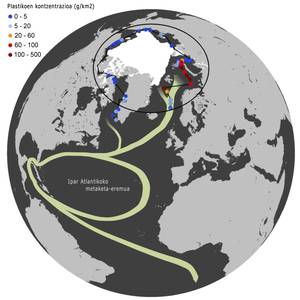On the island of Pacific, the coastal invertebrates have created a new community.
2023/04/17 Galarraga Aiestaran, Ana - Elhuyar Zientzia Iturria: Elhuyar aldizkaria

The marine invertebrates of the Pacific West Coast have created a community in the plastic remains of the North Pacific East subtropical whirlpool. This group of waste is also known as the Pacific Island, located in the open sea. However, researchers have shown that the place of residence of coastal marine invertebrates is bi-familiar and even reproductive. The so-called neopelastic community has been published in the journal Nature Ecology & Evolution.
For his research, Linsey Haram and his colleagues received 105 floating plastic remains, from November to January 2019, in the subtropical whirlpool in the eastern North Pacific. In total, 484 invertebrate organisms were identified in the samples, of which 80% are species typical of coastal habitats. The number of coastal species, such as arthropods and molluscs, was three times higher than that of pelagic species normally living in the open sea. They have also confirmed that they are reproduced there.
According to researchers, this discovery indicates that species of coastal origin are able to travel thousands of kilometres of plastic waste for years and to survive and reproduce. It follows, moreover, that the reason why so far they did not live on the high seas was not ecological or physiological, but that they lacked a substrate. The conversion of plastic waste into sites inhabited by coastal species has given rise to new dynamics of disposal and the emergence of highly diverse communities on the high seas. They explain that further research is needed to understand the survival of species and their ecological and evolutionary effects.

Gai honi buruzko eduki gehiago
Elhuyarrek garatutako teknologia






